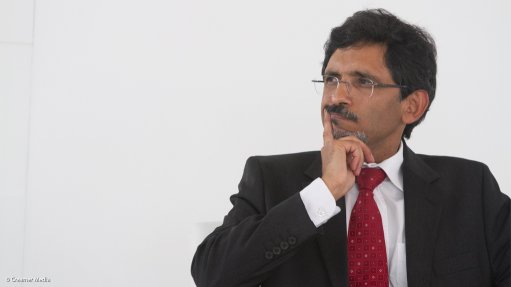
Economic Development Minister Ebrahim Patel
Photo by: Duane Daws
Economic Development Minister Ebrahim Patel reports that improved capital project planning and cost containment have emerged as two leading priorities for the Presidential Infrastructure Coordinating Commission (PICC), which is overseeing government’s R4-trillion National Infrastructure Plan.
Speaking in Johannesburg at the release of a KPMG publication containing a series of articles on South Africa’s public infrastructure programmes, Patel said the PICC was focusing on improving the State’s planning capability, as well as its capacity to negotiate a better deal when entering public-private partnerships (PPPs).
“One of our biggest challenges now, is to get a better planning framework and more value for money – we are paying too much for our infrastructure,” Patel averred.
“We [believe we] can get a lot more done within the existing fiscal envelope and that’s where a lot of our attention is going.”
Government, he said, had overpaid for previous private prison contracts, as well as for various government accommodation PPPs, including the Department of Trade and Industry campus, in Pretoria, from where the Economic Development Department operated.
The PICC would, therefore, seek to ensure that public interest was more fully “embedded” into future PPPs by “marrying” national interest with the private sector’s objective of earning returns for shareholders. It was, therefore, “not feasible” for government to delegate full responsibility for the infrastructure roll-out to the private sector, which needed to be guided by policy to deliver on national economic development.
KPMG’s global infrastructure practice head James Stewart reported that governments globally were “intervening” more to clear impediments to infrastructure projects, where funding remained the biggest challenge.
Pressure was also rising for governments to prioritise projects with the greatest social impact, particularly in a context where users were increasingly expected to pay for infrastructure services and where social media had given communities a stronger platform to voice their concerns and objections.
Patel batted away the persistent criticism that government was failing to deliver on its infrastructure promises, arguing that the official figures pointed to a positive trend for construction growth and government infrastructure spending.
However, he acknowledged that “lumpiness” remained in the fixed investment cycle and that more needed to be done to smooth out the project pipeline and increase infrastructure investment, which stood at around R250-billion a year currently.
PICC research showed that for every 3% rise in infrastructure spending, South Africa’s gross domestic product increased by one percentage point.
"But we are trying to squeeze more bang for the buck," he said, indicating that government was keen to reduce overheads associated with projects and pursue more uniform designs so as to lower the amount of money not being directed towards actual construction sites.